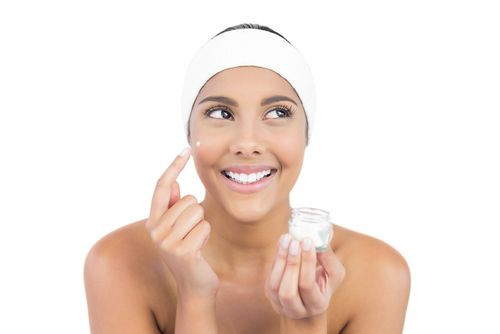Skin Creams With High Levels Of Toxic Mercury Identified Faster With Scientists' New Method

A typical store in an Asian or Middle Eastern country will contain a whole section dedicated to fairness creams — creams that promise to lighten and brighten the skin tone. But the millions of people using it are unaware of the dangers they face by slathering on the chemical gunk onto their face.
Research suggests that these creams contain the toxic metal mercury, and they affect not only the users but even those around them. At a meeting organized Wednesday at the 248th National Meeting & Exposition of the American Chemical Society (ACS), scientists spoke about the high risk groups affected by these creams and a method of faster identification of these toxic creams.
"In the U.S., the limit on mercury in products is 1 part per million," said Dr. Gordon Vrdoljak, of the California Department of Public Health in a statement. "In some of these creams, we've been finding levels as high as 210,000 parts per million — really substantial amounts of mercury. If people are using the product quite regularly, their hands will exude it, it will get in their food, on their countertops, on the sheets their kids sleep on."
Although mercury as an active ingredient does lighten skin tone and reduce dark spots, it comes with a host of associated side effects. Research conducted on mice showed that a top fairness brand affected the kidneys, liver, and brain of female mice. Other reports have suggested that the metal can cause lower cognitive functioning, kidney damage, headaches, fatigue, hand tremors, depression, and other symptoms in users. The U.S. government recognizes this and hence has set a threshold value for the amount of mercury used in products or has banned it altogether.
But these creams still find their way into several households. These are brought in as exports by people traveling to the U.S. from countries in Asia, Central America, the Middle East, and Africa, where there is a huge market for fairness creams. They then distribute the creams to friends and family, or sell them in ethnic grocery stores, where they are difficult to track, says Vrdoljak.
Earlier identifying mercury content in products was also a cumbersome process, says Vrdoljak. But a new screening method called total reflection X-ray fluorescence can identify toxic products quickly and as efficiently the previous methods. And with this method the team can quickly identify sources of mercury poisoning and help those affected much faster than before.
"Testing one product using the old technique could take days," he said. "Using the new instrument, I can run through 20 or 30 samples in a day quite easily. By identifying those products that contain mercury, we can direct people to remove them and clean up their households."
Typically when cream-users start experiencing symptoms like hand-shaking and headaches, they visit their doctors and are recommended urine tests. The urine analysis identifies high levels of mercury present in the body. In such cases, Vrdoljak and his team are contacted and they do a thorough analysis of all the products in the patient’s home to root out the products that contain mercury. Their work has led to the banning of two products last year. But often the brand cannot be identified, as the creams come in unmarked containers.
"In the U.S., it's hard to gauge how much of these products are being used," Vrdoljak said. "But at least with this new technique, we can identify them much faster and help more people than before."
Source: Vrdoljak G, et al. 248th National Meeting & Exposition of the American Chemical Society. 2014.



























